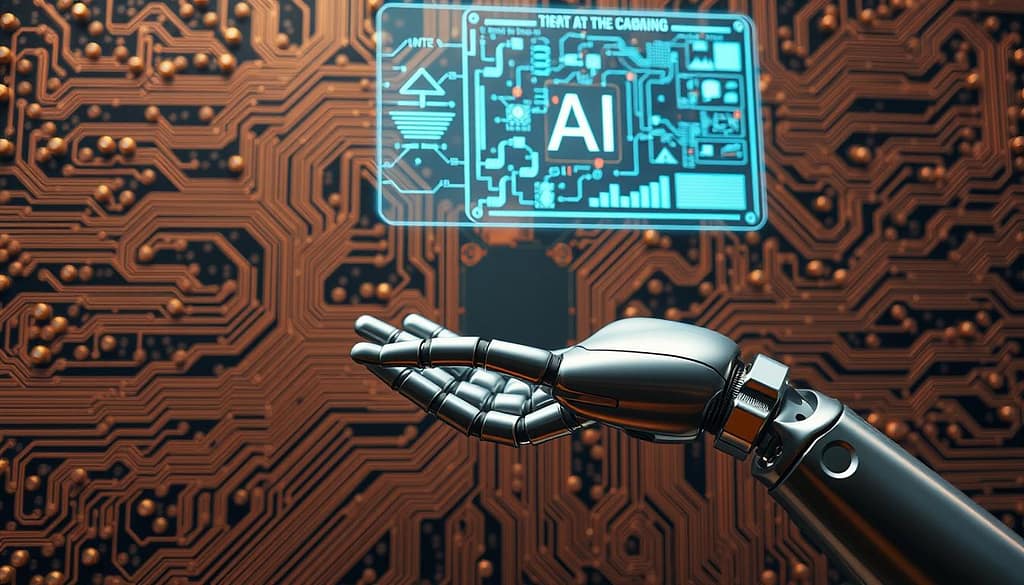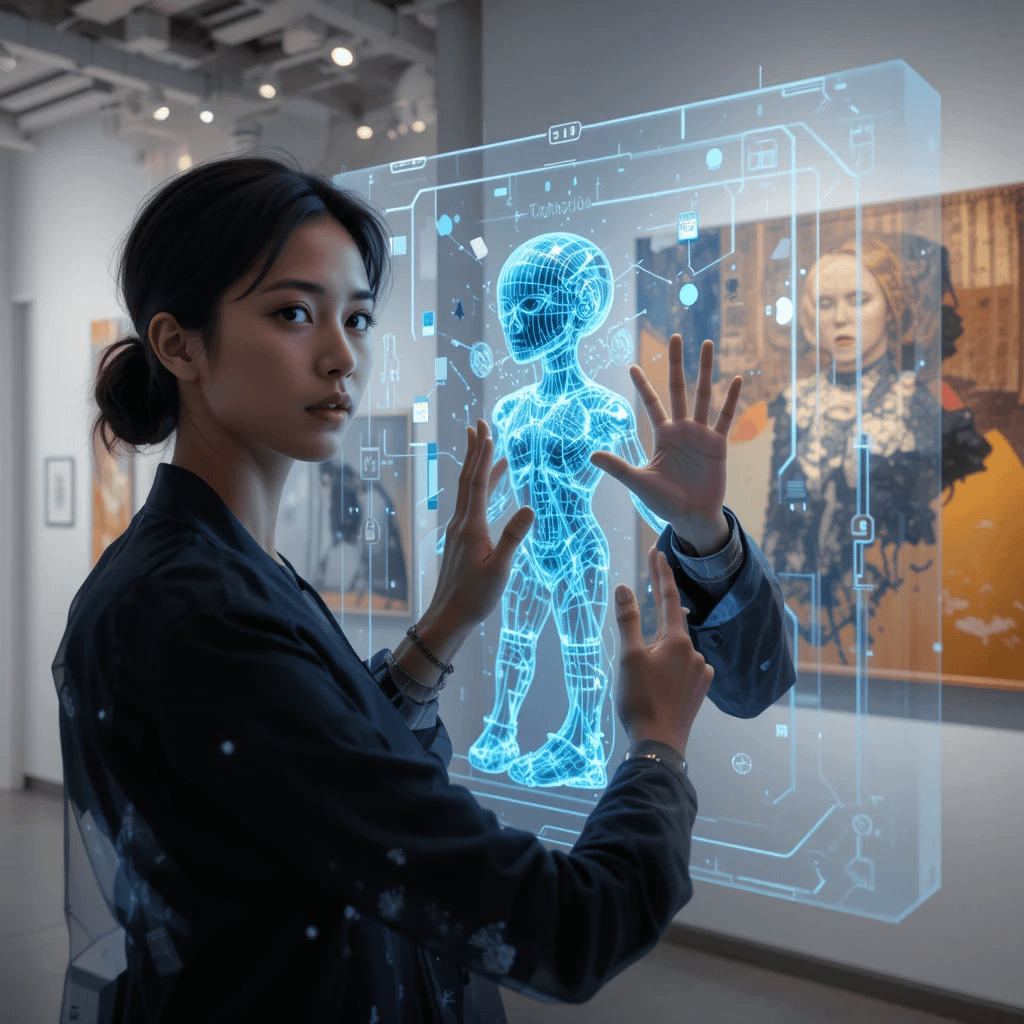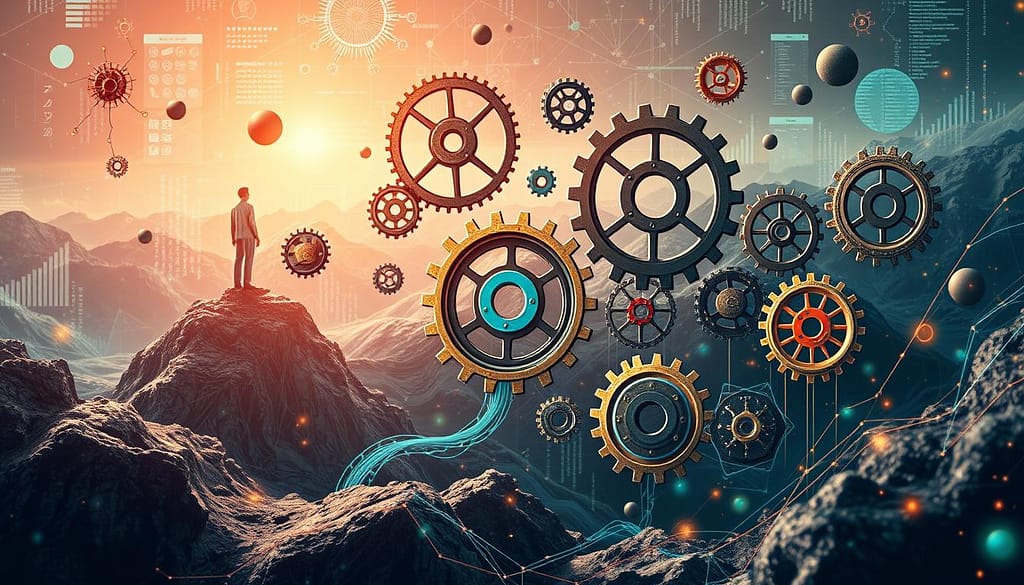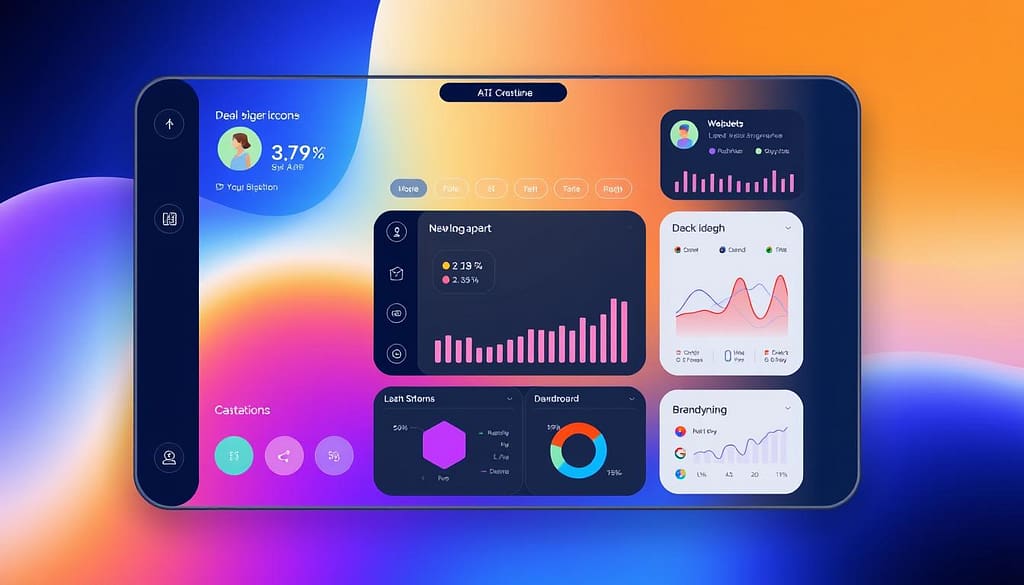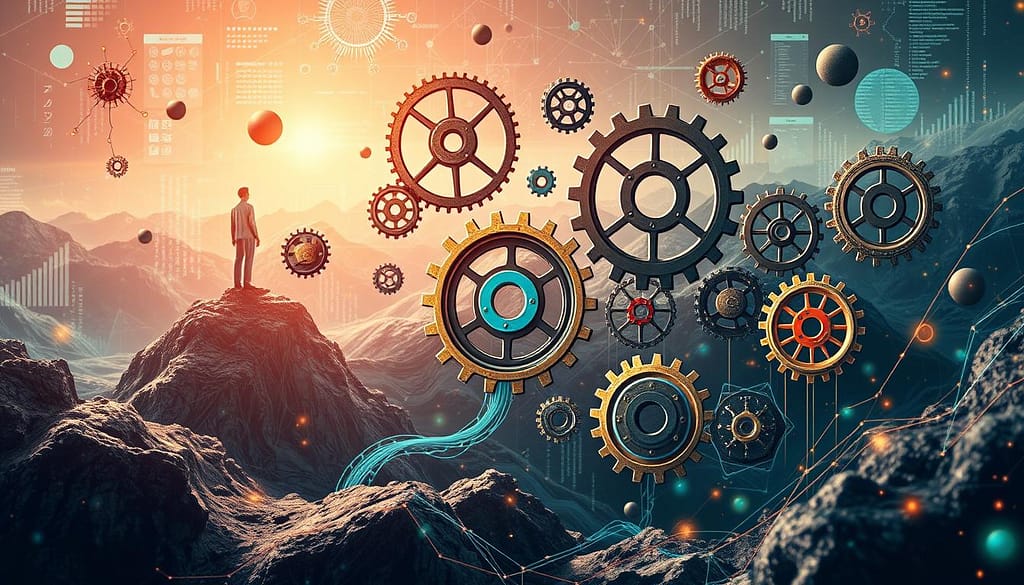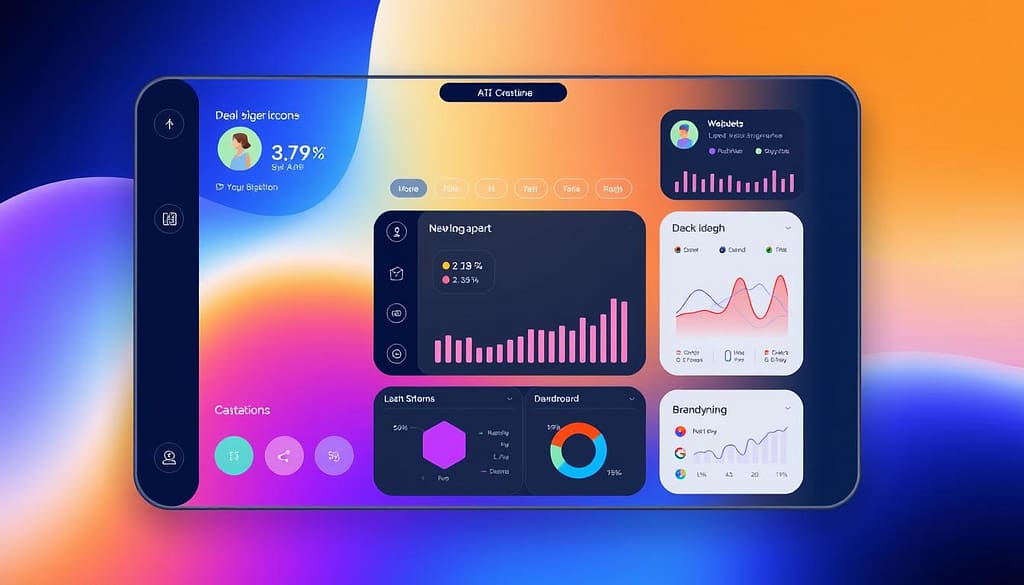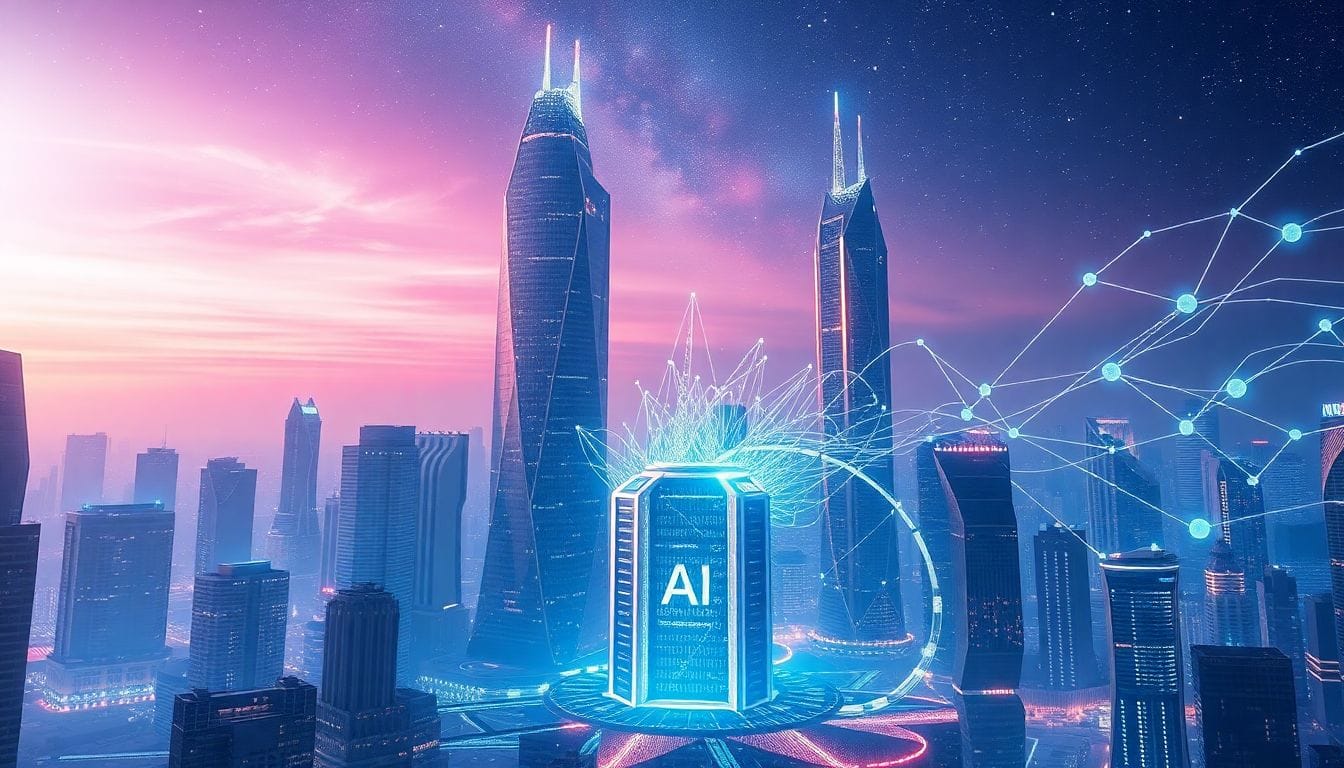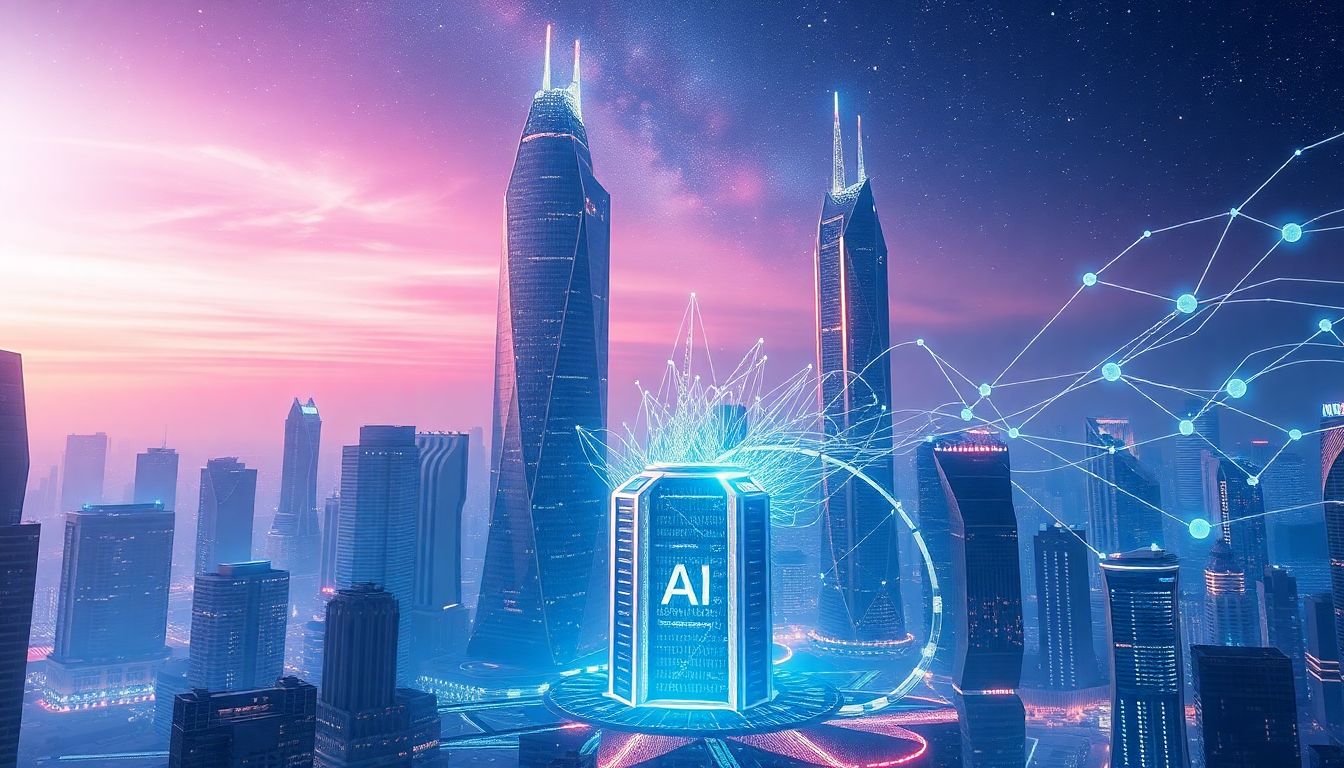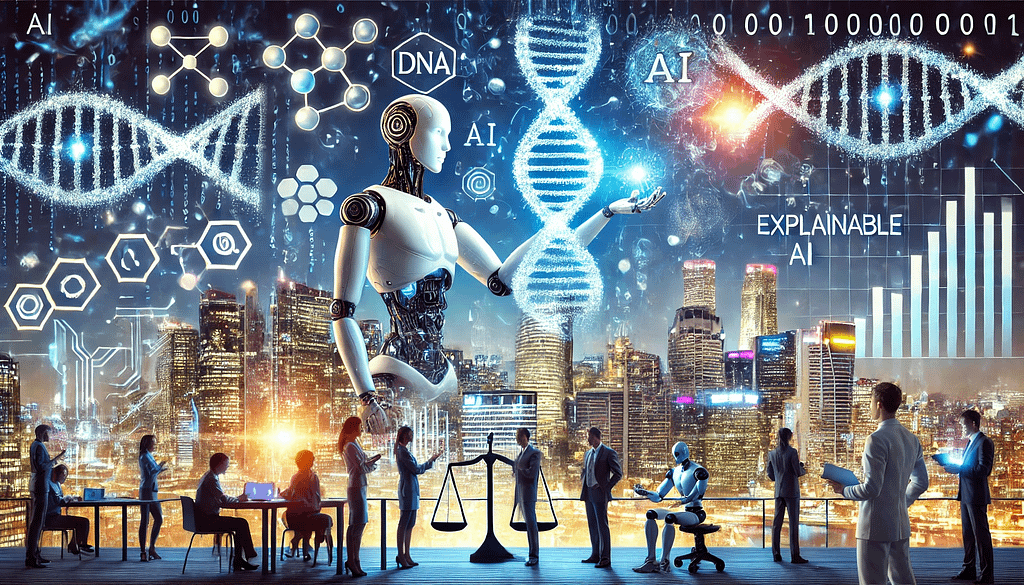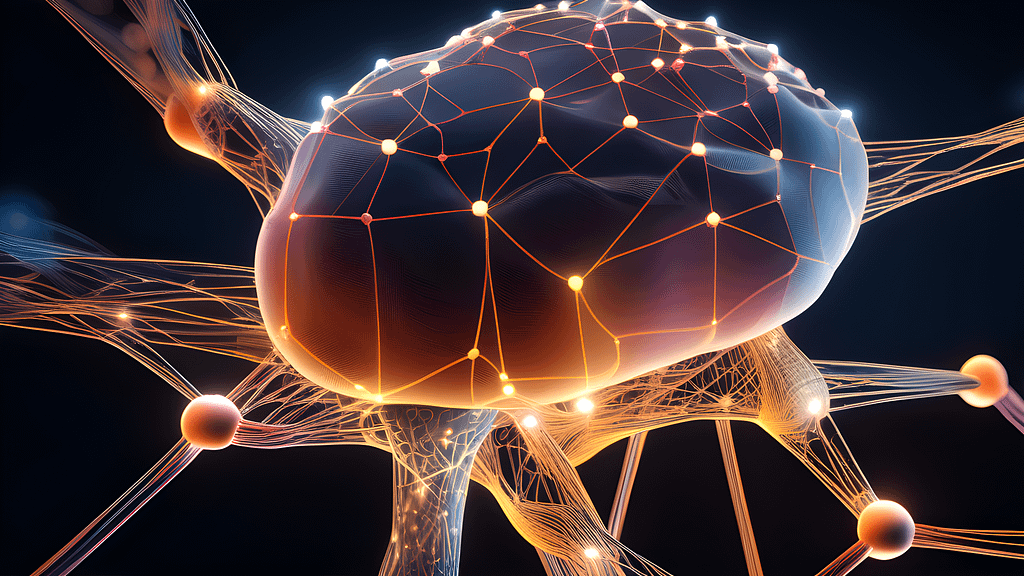Janet Lam, an AI expert, says artificial intelligence will keep changing. It will play a big role in how businesses compete and connect. Companies need to keep up with machine learning and technology to stay ahead.
By 2025, hyper-personalization will change how we interact with technology every day. Businesses must meet customer needs for easy service. This makes it key to look at the newest AI trends.
In 2025, AI will change many industries like healthcare, finance, and education. AI trends and machine learning will shape the future of these areas. It’s important to know about AI’s progress and its effects on society and business.
The Evolving Landscape of AI Trends 2025
The AI world is changing fast. Big steps forward include large language models, multimodal AI, and edge computing. OpenAI’s new models, like o1 and o3, solve problems step by step. Multimodal AI systems have become increasingly sophisticated, seamlessly integrating text, vision, speech, and various sensor inputs. This helps in healthcare, finance, and education by analyzing complex data.
Some key uses of these advances are:
- Improved problem-solving with step-by-step thinking
- Better decision-making thanks to large language models and multimodal AI
- More efficiency from edge computing, which processes data near the source
- Stronger focus on responsible AI development and deployment
- Clearer frameworks emerging for AI governance and accountability.
As AI grows, more money will go into large language models, multimodal AI, and edge computing. The AI software market is set to hit over $126 billion by 2025. This shows AI’s big role in the future of many industries. AI moving beyond experimental projects to become deeply integrated into core business operations.
By using these new tools and investing in AI, companies can lead the way. They can improve customer service, make better decisions, and work more efficiently. The benefits of AI are huge and varied. Access to powerful AI tools through cloud services and specialized platforms, democratizing access to the technology.
Next-Generation Large Language Models
Large language models are changing many fields, like healthcare and finance. Emergence of modular architectures allowing specialized components for different tasks, They help in healthcare by analyzing medical data. This leads to better patient care. In finance, they spot fraud and enhance customer service.
These models make tasks easier and more accurate. They can do many things, like write text, translate languages, and understand feelings. These models stand out for their enhanced reasoning capabilities and sophisticated understanding of context, fundamentally changing how AI systems process and generate information.
Microsoft says AI agents will soon do more on their own. This will make life easier at home and work. Models like Google’s LaMDA and Facebook’s OPT show the focus on specific uses. As they get better, we’ll see new uses in many areas.
Large language models also boost software development by 30-50%. Word2vec in 2013 made natural language tasks better. As AI needs grow, these models will be key in many fields, including healthcare and finance.
| Model | Parameters | Year Introduced |
|---|---|---|
| GPT-2 | 1.5 billion | 2018 |
| GPT-3 | 175 billion | 2020 |
Breakthroughs in Multimodal AI Systems
Recent machine learning advancements in multimodal AI systems are changing how we talk to computers. These systems can understand and answer us in a more natural way. Google DeepMind’s Mariner is a great example, breaking down tasks into simpler actions.
These systems are being used in many areas, bringing big benefits. Some of the main advantages include:
- Enhanced data processing and transformation capabilities
- Improved accessibility for people with disabilities
- Streamlined administrative tasks and improved diagnostics in healthcare
- Advanced research assistance and analysis
- Personalized education and training systems
As AI Automation keeps getting better, we’ll see interfaces that really get us. Multimodal AI is making our interactions with computers more natural and easy. This opens up a whole new world of tech possibilities. AI developments during the year will add to emerging tech trends throughout the year that will be interesting.
| Application | Benefit |
|---|---|
| Healthcare | Improved diagnostics and streamlined administrative tasks |
| Customer Service | Enhanced customer experience and more efficient issue resolution |
Edge Computing and AI Democratization
Edge computing is key in making AI more accessible. It processes data close to the source. This cuts down on delays and boosts quick decision-making.
Microsoft says edge AI will bring faster, safer, and more responsive solutions. This is great for many industries and uses.
Edge computing and AI make businesses use AI to innovate and grow. With more IoT devices coming, edge computing is crucial. It handles the big data these devices create.
This is vital for fast and high-bandwidth needs like self-driving cars and smart finance.
Some big pluses of edge computing and AI include:
- Less delay and better quick decisions
- AI becomes more affordable and accessible
- AI apps work better and are more reliable
- Data stays safer and more private
The combination of more powerful edge devices and optimized AI models has made advanced capabilities accessible to smaller organizations and individual developers. Companies can now implement AI solutions without investing in expensive cloud infrastructure.
Using machine learning at the edge gives fast access to data. This makes AI training and use better. As AI use grows, edge computing will help businesses use AI to stay ahead.
Revolutionary Developments in Healthcare AI
Healthcare AI is changing the medical world. It brings personalized medicine and predictive analytics. These tools help doctors give better care.
AI in healthcare is a smart choice. It saves money by automating tasks. This makes healthcare more efficient.
AI helps health systems improve patient care. It cuts down on delays and makes care faster. It also helps manage costs and improve patient care.
AI uses predictive analytics to spot high-risk patients. It helps prevent problems. Personalized medicine makes treatment plans fit each patient’s needs.
Climate change affects health, says the World Health Organization. It causes heat waves, droughts, and air pollution. We need sustainable healthcare practices.
Most healthcare leaders think automation is key to solving staff shortages. 85% plan to use generative AI soon. The future of healthcare AI looks bright.
We’ll see better patient care and more efficient systems. Healthcare will also be kinder to the environment.
The Rise of Autonomous Robotics
Autonomous robotics is changing the game in many industries. It makes things more efficient and productive. Forbes says AI robots will make life easier at home and work.
By 2025, these robots will be able to understand data and make quick decisions. This will make work better in many areas.
Cobots, or collaborative robots, will get easier to use. Soon, anyone can use them, making work more accessible. Mobile manipulators will also boost productivity and cut costs in changing work places.
Digital Twin tech will let us test robots in a virtual world. This way, we can find problems before they happen. It will make robots work better.
Some big pluses of autonomous robotics are:
- More efficiency and productivity
- Happy customers
- Less money spent
- Work is easier for everyone
The Autonomous Robotics market is set to grow fast. It’s expected to grow by 28% each year until 2025. It will be worth about $150 billion then. Big names like Amazon, Tesla, and Waymo are leading the way in this tech.
Enterprise AI Transformation
Businesses are using enterprise AI to change and keep up with the competition. Microsoft says AI will keep growing and change how businesses compete and connect. AI trends 2025 will help make things more efficient, cut costs, and make customers happier.
AI is very important in business. For example, 37% of U.S. IT leaders think they already use AI well. And 68% plan to invest in AI soon. Also, 58% of leaders say AI has made their work much better, thanks to AI that can create things.
AI is a big win for businesses. My technology predictions all reflect optimism as AI trends keep changing the business world, companies that use AI will do better. AI is key for companies wanting to succeed and grow in today’s fast world.
Sustainable AI Development Practices
The world is getting more dependent on artificial intelligence. This makes sustainable AI development very important. AI systems use a lot of energy and create a lot of waste. But, companies can make a difference by using green AI practices.
Microsoft is leading the way by making their tech more energy-friendly. They use special chips and coolers to save energy. This helps the planet and saves money too. It shows that green AI is key for a better future.
- Use green energy for data centers
- Choose energy-saving tech
- Recycle and dispose of waste responsibly
By doing these things, companies can help the environment and make more money. They also get a good name for being eco-friendly. As AI gets more popular, it’s vital for companies to focus on green AI.
AI Governance and Regulatory Framework
AI is growing fast, and we need good rules to manage it. Only 23% of Americans trust companies with AI. This shows we need clear rules for AI to help everyone.
The European Union’s AI Act is a big step. It sorts AI systems by risk and can fine companies up to €35 million. The AI Liability Directive also aims to fix old laws for new AI problems.
Other places are making their own rules too. China started rules for generative AI in 2023. In the U.S., states might make laws about AI that help consumers.
We must make sure AI is used right. This means good rules and education. By focusing on AI rules, we can make sure AI helps us all and is fair.
- Establishing clear governance and regulatory frameworks for AI
- Prioritizing accountability and transparency in AI development and deployment
- Investing in education on AI literacy across industries
- Encouraging proactive corporate investment in Responsible AI teams
Advances in Neural Network Architecture
Recent changes in neural network architecture are promising. Google DeepMind is working on Gemini 2.0. It uses a step-by-step method for solving problems. This could make AI more accurate and faster.
Neural networks are getting better with new tech. Edge computing and multimodal AI systems are key. Edge computing does data work right where it’s needed. This makes AI faster. Multimodal AI can work with different data types like audio and images. This makes it more useful and efficient.
Advances in neural networks bring many benefits. They make AI more accurate and fast. They also make data work better and faster. And they can handle many types of data.
AI is getting better fast. We’ll see even more improvements in neural networks soon. These changes could change many industries, like healthcare and finance. The impact will be huge.
AI Safety and Security Measures
AI is growing fast, and keeping it safe is key. Microsoft is working hard to test AI for threats like fake data. This shows how important it is to make AI reliable.
Many experts are looking into GenAI tools. About 64% of them are either studying or have bought one. Also, 70% plan to buy GenAI in the next year. This shows we need strong safety and security for AI.
Some important facts about AI safety and security are:
- 46% of cybersecurity specialists think GenAI helps with security
- 76% of security leaders prefer tools made for security over others
- 37% of senior managers don’t trust AI, and 42% of mid-level managers feel the same
With good AI safety and security, we can trust AI more. This reduces the chance of attacks.
Federated Learning and Distributed AI
Federated learning and distributed AI are changing how we use artificial intelligence. They make learning together from many devices possible. This improves privacy and makes things faster.
This way, we don’t need to store all data in one place. It also lowers the chance of data getting stolen. Plus, it makes models work better by 5-10% than old ways.
The market for federated learning is expected to hit USD 2.9 billion by 2027. This is what MarketsandMarkets says.
Distributed AI lets AI models work on many devices. This makes things bigger and more efficient. It’s being used for things like better traffic control and network optimization.
Using both federated learning and distributed AI helps teams work better together. It makes things more efficient and cost-effective.
Some big benefits include:
- Improved accuracy and reduced latency
- Enhanced privacy and security
- Increased scalability and efficiency
- Reduced costs and improved collaboration
As AI gets more popular, so will federated learning and distributed AI. AI could add about $15.7 trillion to the world’s economy by 2030. By using these new technologies, companies can lead the way and enjoy the benefits.
Custom AI Chip Innovation
Custom AI chips are changing artificial intelligence. They make AI work better and use less power. Companies like Nvidia, Google, and Apple are making new chips.
Nvidia’s Blackwell architecture is in the GB10 Grace Blackwell Superchip. It has a 20-core Arm CPU for fast AI work.
Amazon Web Services (AWS) is also making custom AI chips. The Trainium2 chip is faster than the first one. Google’s Axion processor uses less energy than old CPUs.
Custom AI chips have many benefits. They make AI more accurate and fast. They also help companies use less energy.
| Company | Custom AI Chip | Features |
|---|---|---|
| Nvidia | Blackwell architecture | 20-core Arm CPU, high performance in AI workloads |
| AWS | Trainium2 chip | Significant performance improvements, enhanced ML training efficiency |
| Axion processor | Approximately 60% greater energy efficiency than conventional CPUs |
Conclusion: Shaping Tomorrow’s AI Landscape
The future of AI looks bright. will lead to self-action in many fields. The will make AI easier to create.
will speed up AI use in different areas. will improve how devices and cars work in real-time.
AI ethics will grow, making sure AI is fair and clear. will solve data problems and protect privacy. will help AI understand complex data better.
will change many industries. will help find new medicines faster. AI will soon be for everyone, not just big companies.
By working on AI responsibly, we can make a better world. This technology has endless possibilities. Let’s use it to improve our future.
Source Links
- Council Post: Top 7 Forecasted AI Trends To Watch In 2025 – https://www.forbes.com/councils/forbesbusinesscouncil/2025/01/08/top-7-forecasted-ai-trends-to-watch-in-2025/
- 5 AI Trends to Watch in 2025 – https://www.coursera.org/articles/ai-trends
- What’s next for AI in 2025 – https://www.technologyreview.com/2025/01/08/1109188/whats-next-for-ai-in-2025/
- An Appetite for AI: Trends and Predictions for 2025 – DATAVERSITY – https://www.dataversity.net/an-appetite-for-ai-trends-and-predictions-for-2025/
- 2025 AI Trends Outlook: The Rise of Human-AI Collaboration – https://blog.workday.com/en-us/2025-ai-trends-outlook-the-rise-of-human-ai-collaboration.html
- Large Language Models: What You Need to Know in 2025 | HatchWorks AI – https://hatchworks.com/blog/gen-ai/large-language-models-guide/
- 5 Generative AI Trends To Watch Out For In 2025 – https://www.forbes.com/sites/janakirammsv/2025/01/12/5-generative-ai-trends-to-watch-out-for-in-2025/
- MindsDB Blog – https://mindsdb.com/blog/ai-in-2025-predictions-from-industry-experts
- AI 2025: Artificial Intelligence Future Trends – https://indigo.ai/en/blog/ai-trends/
- 14 AI Trends 2025: Shadow AI, Humanoid Robots, and More – 365 Data Science – https://365datascience.com/trending/ai-trends/
- Edge Intelligence: Edge Computing and ML (2025 Guide) – viso.ai – https://viso.ai/edge-ai/edge-intelligence-deep-learning-with-edge-computing/
- The Democratization of AI in 2025 | Dynamic Edge – https://dynedge.com/ai-democratization-2025/
- 2025: The ‘great tech reckoning’ and the ‘real’ AI revolution – https://www.healthcareitnews.com/news/2025-great-tech-reckoning-and-real-ai-revolution
- 10 healthcare technology trends for 2025 – https://www.philips.com/a-w/about/news/archive/features/2024/10-healthcare-technology-trends-for-2025.html
- Robotic Trends in 2025: Innovations Transforming Industries | RoboticsTomorrow – https://www.roboticstomorrow.com/news/2025/01/15/robotic-trends-in-2025-innovations-transforming-industries/23887/
- Autonomous Robotics in 2025: Market Growth and Industry Impact – https://www.linkedin.com/pulse/autonomous-robotics-2025-market-growth-vv9uc
- AI in 2025: Generative Tech, Robots, and Emerging Risks – https://www.technewsworld.com/story/ai-in-2025-generative-tech-robots-and-emerging-risks-179587.html
- Five Trends in AI and Data Science for 2025 | Thomas H. Davenport and Randy Bean – https://sloanreview.mit.edu/article/five-trends-in-ai-and-data-science-for-2025/
- Superagency in the workplace: Empowering people to unlock AI’s full potential – https://www.mckinsey.com/capabilities/mckinsey-digital/our-insights/superagency-in-the-workplace-empowering-people-to-unlock-ais-full-potential-at-work
- 4 Enterprise AI Trends that will Define 2025 | Uniphore – https://www.uniphore.com/blog/enterprise-ai-trends-2025/
- AI Trends Report 2025 – https://www.statworx.com/en/content-hub/whitepaper/ai-trends-report-2025/
- Generative AI Trends to Watch in 2025 – https://promevo.com/blog/generative-ai-trends-2025
- The Future of AI and Cloud Computing: Trends for 2025 | Baufest – https://baufest.com/en/the-future-of-ai-and-cloud-computing-trends-for-2025-and-beyond/
- AI Governance In 2025: Expert Predictions On Ethics, Tech, And Law – https://www.forbes.com/sites/dianaspehar/2025/01/09/ai-governance-in-2025–expert-predictions-on-ethics-tech-and-law/
- AI trends for 2025: AI regulation, governance and ethics – https://www.dentons.com/en/insights/articles/2025/january/10/ai-trends-for-2025-ai-regulation-governance-and-ethics
- AI in Architecture: Trends, Tips, and Examples in 2025 – https://gbdmagazine.com/ai-in-architecture/
- 8 AI and machine learning trends to watch in 2025 | TechTarget – https://www.techtarget.com/searchenterpriseai/tip/9-top-AI-and-machine-learning-trends
- Cyber AI Trends Review: Preparing for 2025 – https://www.infosecurity-magazine.com/news-features/cyber-ai-trends-review-preparing/
- 6 AI-Related Security Trends to Watch in 2025 – https://www.darkreading.com/cyber-risk/6-ai-related-security-trends-watch-2025
- Distributed Artificial Intelligence Latest Trends | 2025 – https://www.xenonstack.com/blog/distributed-ai-latest-trends
- Top AI/ML Trends in 2025 | Svitla Systems – https://svitla.com/blog/ai-ml-trends-2025/
- Federated Learning and Generative AI – https://www.xcubelabs.com/blog/federated-learning-and-generative-ai-ensuring-privacy-and-security/
- 6 Tech Giants Dominating the 2025 Semiconductor & AI Chip Race – https://medium.com/@frulouis/6-tech-giants-dominating-the-2025-semiconductor-ai-chip-race-b9b3dac7e498
- 9 REAL AI trends to watch in 2025 | Pragmatic Coders – https://www.pragmaticcoders.com/blog/ai-predictions-top-ai-trends
- Top 10 AI & ML Trends for 2025: Shaping Tomorrow’s Intelligence – https://dhirajkumarblog.medium.com/top-10-ai-ml-trends-for-2025-shaping-tomorrows-intelligence-3af9da5387fd
- Generative AI Innovations in 2025: Shaping Tomorrow’s Business Landscape – https://www.linkedin.com/pulse/generative-ai-innovations-2025-shaping-tomorrows-business-landscape-ikdsc







